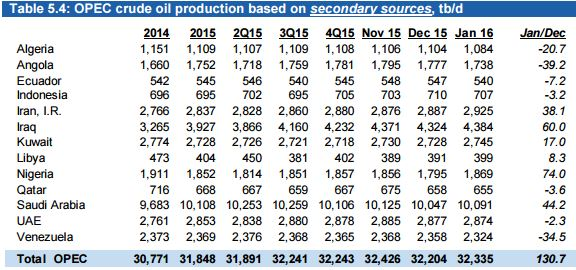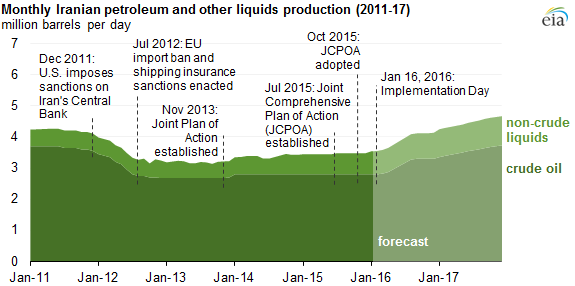- Thread starter
- #61
Waitin' for the day when Dubai reverts to a Bedouin ghost town...
Kuwaitis face cuts in lavish benefits as oil prices drop
24 March 2016 - Sitting on the world's sixth largest proven oil reserves, Kuwait's 1.3m citizens are accustomed to lavish benefits, such as interest-free housing loans, free education and healthcare, and food and fuel subsidies.
See also:
Oil Recovery Hits Saudi Devaluation Bet
Investors would have lost 1.8% since forwards' January peak; GCC pegs have survived 30 yrs of oil-price fluctuations: HSBC
Kuwaitis face cuts in lavish benefits as oil prices drop
24 March 2016 - Sitting on the world's sixth largest proven oil reserves, Kuwait's 1.3m citizens are accustomed to lavish benefits, such as interest-free housing loans, free education and healthcare, and food and fuel subsidies.
But like other Gulf states, the sharp fall in global oil prices has forced the country to consider whether these benefits are luxuries it can no longer afford. Last month, Parliament Speaker Marzouq al-Ghanim warned that continuing to spend in the same way would be "economic suicide". "We cannot lie to the Kuwaiti people, we cannot come here and say we will protect your pockets and the citizen will not be affected," he said. "Everyone's pockets will be affected... This is the reality."
In January, the Emir Sheikh Sabah al-Sabah spoke of the need for better management of spending and for budget cuts to cope with declining revenues. However, an attempt by the government to remove subsidies on diesel and kerosene last year was heavily criticised by MPs. The pressure led to the subsidies being restored, although it was decided that they would be reviewed monthly in accordance with global price fluctuations.

The acting Finance Minister, Anas al-Saleh, also announced this month that the cabinet had approved a plan to impose a 10% tax on corporate profits, as one of a number of measures aimed at reducing Kuwait's budget deficit, projected to be 8.18bn dinars ($27.1bn; £19.2bn) for this financial year. In addition, some state-owned projects, including airports, ports and some facilities of the Kuwait Petroleum Corporation (KPC), would be privatised, Mr Saleh said.
Kuwaiti lawyer Mishari al-Sawwagh feels that the government's priorities in implementing such measures are misplaced. "Our problem in Kuwait is not about money... it's about leadership and management," he told the BBC. Mr Sawwagh believes cutting subsidies will not only hit Kuwaiti citizens but also the 2.9 million-strong foreign workforce on which they depend. "Lifting petrol subsidies, for example, will affect foreign workers who may consider leaving as they can no longer afford the living costs here, and this will also affect our economy," he said.
'Medical tourism'
See also:
Oil Recovery Hits Saudi Devaluation Bet
Investors would have lost 1.8% since forwards' January peak; GCC pegs have survived 30 yrs of oil-price fluctuations: HSBC
Oil’s rebound to about $40 a barrel means some investors are nursing losses after betting that Saudi Arabia would abandon its three-decade-old currency peg. Contracts used to speculate on the kingdom’s exchange rate in the next 12 months have fallen to about the lowest since November. A $1 million wager on the contracts at their peak in January would have lost 68,900 riyals ($18,370), or about 1.8 percent, according to Bloomberg calculations. Several U.S.-based hedge funds were said in February to be among investors that have bet Saudi Arabia would devalue the riyal.
The decreased speculation that Gulf nations will abandon their dollar pegs underscores how crude prices have recovered this year. Oil, Saudi Arabia’s main source of revenue, is headed for a second straight monthly gain. The Saudi riyal has been trading at a rate of 3.75 per dollar since 1986, and the kingdom has taken steps to make speculating against the currency harder. “We have argued that those positioning for a devaluation were going to be disappointed,” said Simon Williams, the London-based chief economist for central and eastern Europe, the Middle East and North Africa at HSBC Holdings Plc. “The pegs have been in place for 30 years in times of high oil prices and low oil prices. I have no sense” that recent losses in crude are “going to change policy makers’ minds or force their hand,” he said.
Gulf Peers
The percentage loss on the riyal forwards may actually be greater than 1.8 percent because derivatives trades tend to be leveraged, meaning that more is at stake than is actually wagered. Still, the cost of a bet on any devaluation is small relative to the windfall investors would stand to receive should it happen. Twelve-month currency forward agreements have declined for other members of the Gulf Cooperation Council. Contracts for the United Arab Emirates’ dirham have dropped 65 percent since hitting a seven-year high in January, while those for the Omani rial have almost halved from a recent peak. Bahraini dinar and Qatari riyal forwards have also tumbled.
Saudi Arabia has dipped into its reserves and sold debt as oil revenue dropped. Foreign-currency holdings have tumbled every month but one since August 2014 to less than $600 billion in January, from about $737 billion. The reserves of GCC members provide ample room to maintain pegged exchange rates for several years, even in an adverse scenario for oil prices, Moody’s Investors Service senior analyst Mathias Angonin said in Dubai last week. Changes to the current exchange-rate systems are unlikely because the costs associated with one-off devaluations would outweigh the benefits, he said.
MORE
Last edited:




